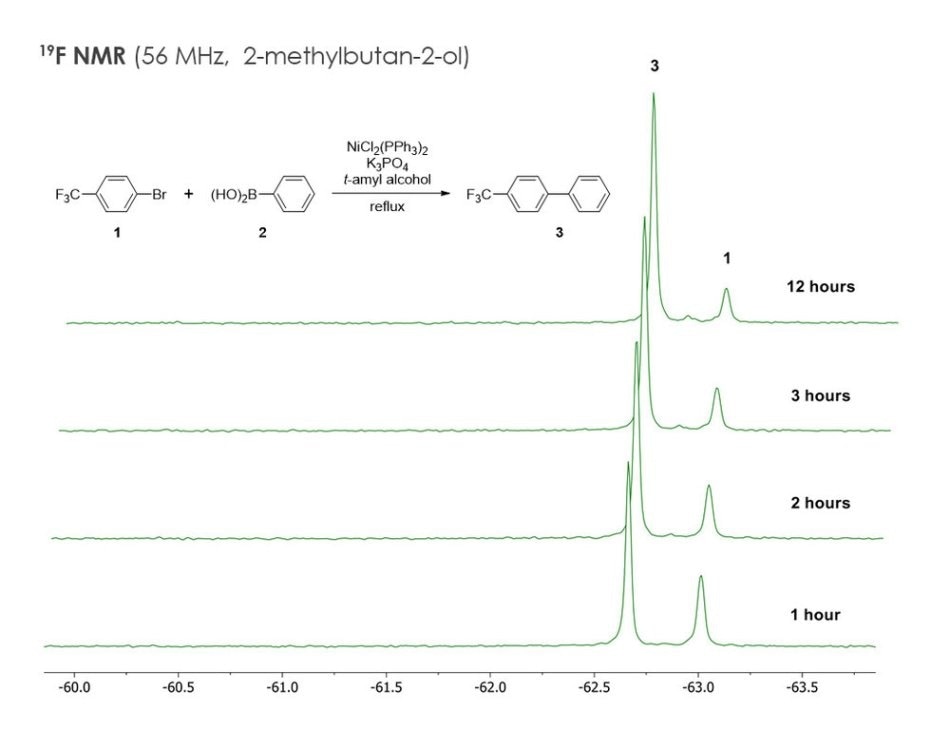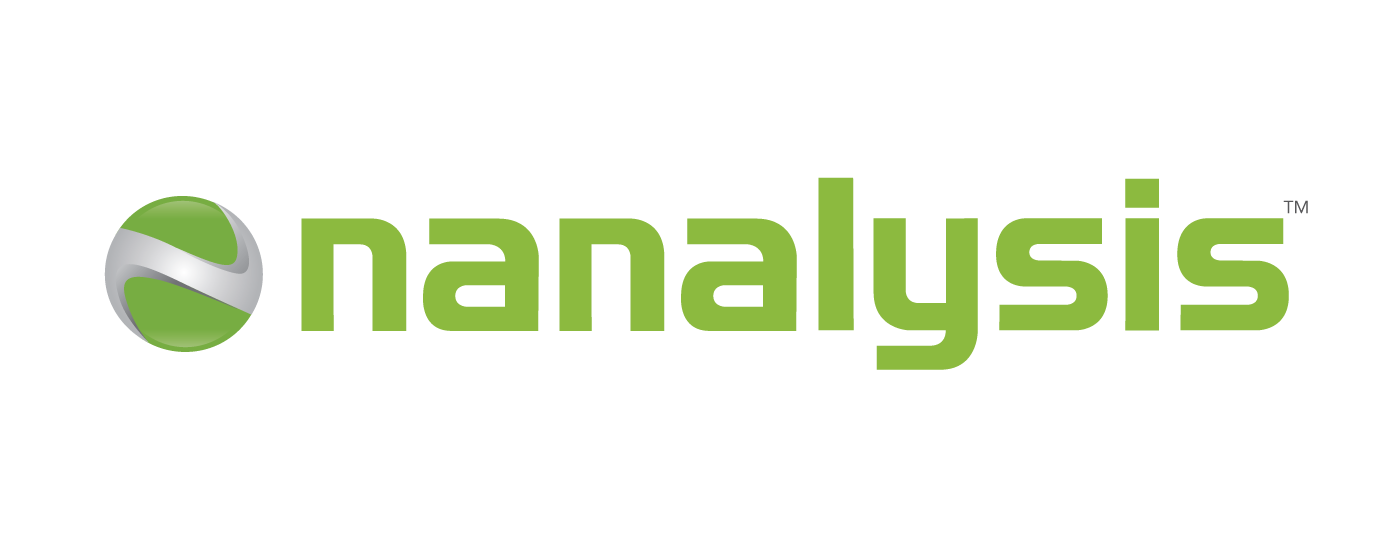In order to fully understand the underlying factors that govern the outcome of a chemical reaction, chemists need the ability to monitor and follow the reaction. NMR spectroscopy is an excellent way of doing this due to its quantitative nature as well as its superior structural elucidation capabilities.
As NMR spectrometers have reduced in size, making them fit more easily into typical lab setups, the popularity of the technique has grown. Nanalysis have developed such an instrument and have previously demonstrated its use both in the laboratory and in process analytics.
The following is an example adapted from an article by Thananatthanachon and Lecklider, recently published in the Journal of Chemical Education[1]. It concerns the nickel catalyzed Suzuki cross-coupling reaction of 1-bromo-4-(trifluoromethyl)benzene (1) and phenylboronic acid (2) to form 4-(trifluoromethyl)biphenyl (3),with the reaction monitored by 19F NMR spectroscopy with the NMReady-60PRO instrument.
Experiment
Equal parts of the reaction mixture were sampled at specific time intervals and placed into an NMR tube. The NMReady-60PRO is able to lock onto a proton signal, meaning that workup of the reaction or the use of deuterated solvents could be avoided and the reaction mixture could be analyzed directly. Figure 1 shows two singlets that were observed at −63.0 ppm and −62.7 ppm. These levels are in agreement with the literature, with the signal at −63.0 ppm able to be attributed to 1 while the signal at −62.7 ppm is assigned to 3.

Figure 1. A series of 19F NMR spectra monitoring the coupling reaction between 1 and 2 to prepare 3.
Results
It is immediately obvious that the signal for 1 decreases over time as the reaction continues with concomitant increase in the peak for 3. The two singlets can also be integrated for a more quantitative analysis, making it easy to determine the ratio of the starting material and product (table 1).
Table 1. Percentage of Compounds 1 and 3 at different points of the reaction.

Conclusion
By making use of the capabilities of the NMReady-60PRO, the ubiquitous Suzuki cross-coupling reaction is readily monitored and studied by NMR spectroscopy. A more important factor is the easy conversion of the Nanalysis instruments into an online detector due to their small footprint and light weight. To learn more about their instruments used as a Process Analytical Technology (PAT) tool, please check out their website.

This information has been sourced, reviewed and adapted from materials provided by Nanalysis Corp.
For more information on this source, please visit Nanalysis Corp.